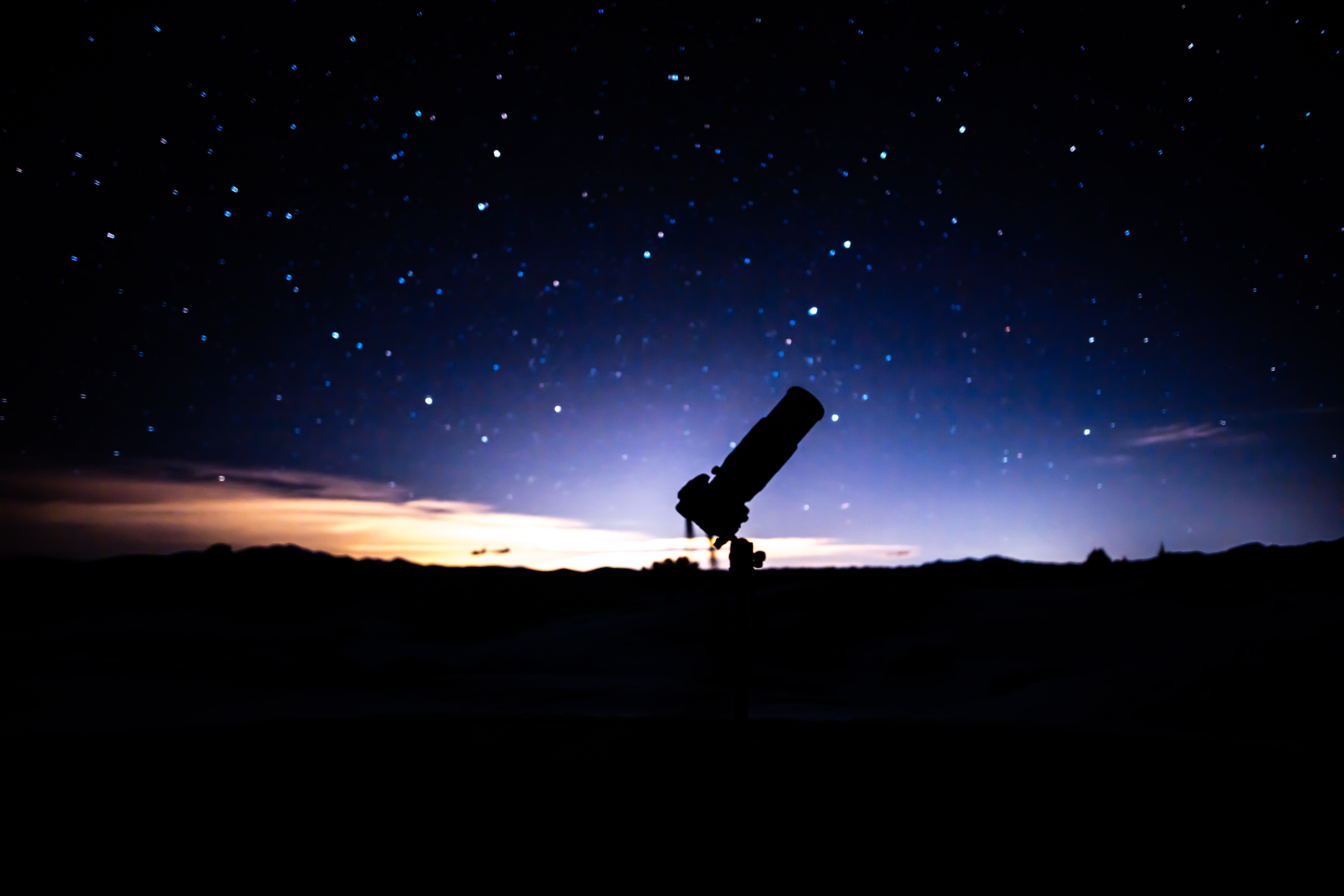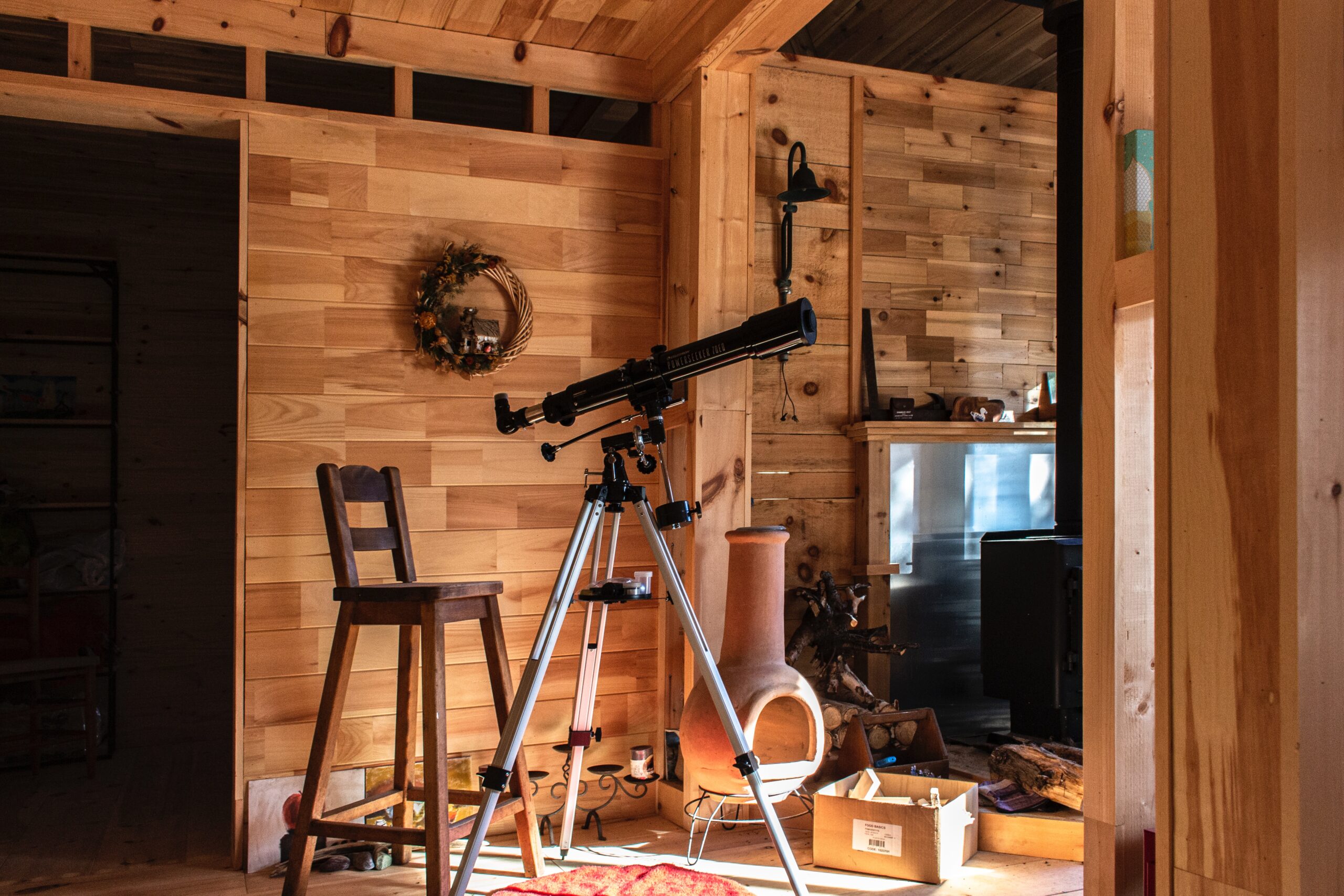For ages, humanity has gazed upon the night sky, pondering the mysteries of the cosmos. The stars, planets, and galaxies that adorn the celestial expanse have inspired wonder, curiosity, and a thirst for knowledge. Yet, it wasn’t until the invention of the telescope that we truly began to unravel the secrets hidden within the depths of space.
Thanks to human ingenuity, telescopes have revolutionized our understanding of the universe. These optical instruments extend our natural vision, allowing us to peer into realms beyond the reach of the naked eye. From the rugged craters of the Moon to the fiery cauldrons of distant stars, telescopes have become our windows to worlds both near and far. In this article, we will dive into the enthralling world of stargazing and the essential part that telescopes play in this astonishing activity.
What is Stargazing?
The practice of watching and learning about the constellations and other celestial bodies visible in the night sky is known as stargazing. This can refer to things like stars, planets, galaxies, nebulae, or any number of other astronomical phenomena. Stargazing is done for a variety of reasons, some of which include scientific interest, spiritual or philosophical contemplation, or simply for the aesthetic and recreational enjoyment of witnessing the beauty of the cosmos.
Throughout human history, stargazing has played a fundamental role in the development of myths, legends, and scientific knowledge. This is evidenced by the fact that cultures all over the world have developed myths, legends, and scientific knowledge based on their observations of the night sky. Stargazing can be done with the naked eye, with binoculars, with telescopes, or even with the assistance of specialized equipment for astrophotography in today’s day and age.
Stargazing is an activity that is frequently participated in by a large number of people, including both amateur and professional astronomers who are interested in learning more about the cosmos. Getting a better understanding of the nature of the cosmos, including its age, its vastness, and the myriad of processes that control its behavior, can be gained through the observation of heavenly objects.
Stargazing can be a form of meditation and reflective practice for some people. It can provide a sense of perspective and a sense of connection to something much greater than the lives we lead on a day-to-day basis. Additionally, it can be a recreational activity that people of all ages engage in to appreciate the beauty of the natural world and marvel at the wonders of space.
What Role Do Telescopes Play in Stargazing?
The use of telescopes in stargazing is essential because they improve our capacity to view and analyze celestial objects in great detail. Telescopes are essential for stargazing for the following reasons:
Light Collection: When light is collected and focused by telescopes, it is possible to see objects that are both more distant and fainter than would be possible using only the human eye. This aspect is of the utmost importance when observing objects such as far-off galaxies, nebulae, and dim stars.
Magnification: The image of celestial objects is magnified when viewed through a telescope, which makes the objects appear more substantial and allows us to see more minute details. This is especially helpful for research about the surface features of planets as well as the structure of heavenly bodies.
Resolution: Images obtained through the use of telescopes have a higher resolution, or the capacity to differentiate between objects that are relatively close together. This is necessary for recognizing minute details on the topographies of planets, moons, and other objects.
Observing Faint Objects: Objects that are too faint to be seen with the naked eye or even with binoculars can be observed through the use of telescopes instead. This includes extremely faraway galaxies, dense clusters of stars, and faint celestial phenomena.
Astrophotography: When it comes to photographing celestial bodies and phenomena, telescopes are necessary instruments. They make possible the use of long-exposure photography, which enables the capture of detailed images of subjects that would otherwise be challenging to photograph.
The Study of Variable Objects: The use of telescopes allows for the observation and analysis of variable stars, supernovae, and other objects that undergo shifts in brightness or behavior over time.
Exploring the Solar System: To observe the planets that make up our solar system, telescopes are an essential tool. They reveal details such as the phases of Venus, the craters on the Moon, the bands on Jupiter, and the rings of Saturn.
Deep-Sky Objects: When observing deep-sky objects, such as galaxies, nebulae, and star clusters, telescopes are necessary for observation. They enable us to see into the depths of the universe’s most remote regions.
Scientific Research: Professional astronomers rely on telescopes to research a diverse range of topics, such as analyzing the characteristics of extrasolar planets and determining the makeup of far-off galaxies, among other things.
Education and Outreach: The use of telescopes as educational tools is extremely beneficial. Students and the general public are allowed to participate in hands-on astronomical activities, which helps to cultivate interest in and comprehension of the universe.
What are the Different Types of Telescopes?
There are many different types of telescopes, each of which is designed to fulfill a particular function:
Refractor Telescopes
A type of optical telescope known as a refractor telescope employs lenses to collect and concentrate light for observation. This type of telescope dates back to the beginning of the 17th century and is known to be one of the most basic. A refractor telescope is made up of the following fundamental parts:
Objective Lens: This is the primary lens, which is the larger of the two lenses at the front of the telescope. Light is gathered there and then refracted, or bent, to concentrate its intensity.
Eyepiece: This is the more diminutive lens that can be found toward the back of the telescope. It does so by further magnifying the image that the objective lens has already created, which then enables you to view it with your eye.
A refractor telescope can gather and focus light because it is equipped with a lens at the front of the instrument known as the objective lens. After that, the focused light converges at a particular point behind the lens, which results in the formation of a miniature image of the observed object that is flipped upside down. This image is magnified by a more compact lens, known as the eyepiece, which is located toward the back of the telescope. This enables the viewer to see the object more clearly.
Reflector Telescopes
A reflector telescope is a type of telescope that employs the use of mirrors to collect and concentrate the light that passes through it. One of the most common and widely used designs for a telescope, it was initially conceived of and developed by Sir Isaac Newton in the 17th century. The following are the key components that make up a reflector telescope:
Primary Mirror: This is the primary mirror that is used in the telescope. Typically, it takes the form of a concave-shaped mirror that collects light and then reflects it toward a central point. The shape of the mirror is typically parabolic, which assists in bringing the light rays into precise focus.
Secondary Mirror: This is the secondary, more compact mirror that can be flat or slightly curved and is positioned near the primary mirror’s focal point. It does this by capturing the light that is being focused by the primary mirror and then directing it out of the telescope at a more practical angle. Although the secondary mirror does not magnify the image, it does make it possible to position the eyepiece or camera in a more convenient location.
The Eyepiece or Camera: At the point where the secondary mirror concentrates the light, either the eyepiece or the camera will be found. This is the area that the observer peers into or takes pictures of to view the magnified object.
The following are the Advantages of Reflecting Telescopes:
Cost-Effective for Large Apertures: When it comes to larger apertures, reflectors are typically the more economical choice when compared to refracting telescopes. Because of this, they are very popular among amateur astronomers who want powerful instruments but don’t want to spend a fortune on them.
Freedom from Chromatic Aberration: Reflectors do not have the optical problem known as chromatic aberration, which is caused by the dispersion of light and is common in refracting telescopes but does not affect reflectors.
Good for Deep-Sky Observations: Due to the large amount of light that they can gather, they are particularly useful for the observation of faint deep-sky objects such as galaxies, nebulae, and star clusters.
Ease of Maintenance: Reflectors do not need regular maintenance, but they might need occasional collimation (the process of aligning the mirrors) to ensure that they are operating at their peak efficiency.
Reflector telescopes have several benefits, but they also have several drawbacks, such as the requirement for periodic collimation and the possibility of having one’s field of view obstructed due to the presence of a secondary mirror. On the other hand, the fact that they are inexpensive and efficient for certain kinds of observations can frequently make up for any shortcomings they may have.
Compound Telescopes
A compound telescope is a type of telescope that combines lenses and mirrors to gather and focus light in the same way that a catadioptric telescope does. It is also known as a catadioptric telescope. This concept seeks to combine the positive aspects of both refracting and reflecting telescopes while minimizing the negative aspects of each type.
The Schmidt-Cassegrain and the Maksutov-Cassegrain are the two primary varieties of compound telescopes that are most frequently used. Both of these designs incorporate a corrector plate, which is essentially a lens, at the front of the telescope. Additionally, each design incorporates a primary mirror and a secondary mirror. The following are the advantages of Compound Telescopes:
Versatility: Observations as diverse as planetary viewing, deep-sky observation, and astronomical photography can all be accomplished with the use of a compound telescope thanks to its adaptability and versatility.
Compact Design: When compared to other designs of telescopes with comparable aperture sizes, these take up less space and are easier to transport. Because of this, they are convenient for travel as well as storage.
Low Maintenance: In comparison to other types of telescopes, such as refractors, compound telescopes typically have lower maintenance requirements.
Good for Astrophotography: Astrophotography is a popular use for these lenses due to their long focal lengths and compact designs. They are capable of capturing high-definition images of deep-sky objects and planetary systems.
Adaptability for Accessories: They typically come with a variety of ports and attachments that can be used for additional gear, such as cameras and electronic devices.
Compound telescopes, however, can be more complex and have a smaller field of view than some other models. Furthermore, their cost might be a little higher than that of more straightforward designs, like reflectors. The benefits of compound telescopes frequently make them a popular option for both novice and expert astronomers, despite these drawbacks.
What are the Essential Telescope Accessories?
Your experience of gazing at the stars will be significantly improved if you have the appropriate accessories. The following items are necessary additions to your telescope:
Eyepieces: These are essential components for adjusting the magnification of your telescope appropriately. You can observe objects at a range of distances and sizes thanks to the various eyepieces’ varying degrees of magnification, which are available to you.
Barlow Lens: These are necessary components for appropriately adjusting the magnification on your telescope, so make sure you have them. Because the magnification of the various eyepieces that are at your disposal varies, you can observe objects that are located at a wide range of distances and a variety of sizes.
Finder Scope or Red Dot Finder: These aids assist in locating and centering objects within the field of view of your telescope. A red dot finder projects a red dot onto a clear window, indicating where your telescope is pointing, while a finder scope is a small, low-powered telescope that is mounted on the main telescope. A finder scope is also known as a finder scope.
Diagonal: This accessory enables you to view objects at a more comfortable angle, which is especially beneficial when the telescope is pointed high in the sky. It does this by bending the light path by ninety degrees, which makes it much simpler to observe.
Filters: There is a wide variety of lenses and filters that you can use to improve your observations. Moon filters, for instance, lessen the amount of glare that is present when observing the Moon, whereas nebula filters improve the visibility of specific types of nebulae.
Collimation Tools: To ensure that the mirrors in a reflecting telescope are properly aligned, these are used to align the mirrors in the telescope. For images that are crisp and clear, accurate collimation is necessary.
Telescope Mount: The ability to make steady observations requires a mount that is both stable and sturdy. There are two primary varieties: equatorial mounts, which are positioned so that they are parallel to the axis of the Earth, and alt-azimuth mounts, which can move both vertically (altitude) and horizontally (azimuth).
Tripod: When using a portable telescope, a stable viewing platform, such as a sturdy tripod, is necessary. Adjustability is essential, given the wide variety of terrains and heights.
Power Supply or Batteries: If you have a computerized telescope, you need to ensure that you have a dependable power source to run the motors and computer systems on the telescope.
Notebook and Pen: Keeping a notebook allows you to record your observations, make notes of interesting details, and monitor your development as a participant in the hobby.
Star Charts or Astronomy Applications: You will learn how to recognize constellations, stars, and other objects in the night sky by using these resources. When it comes to stargazing while on the move, apps on mobile devices like smartphones and tablets can be especially helpful.
Red LED Flashlight: Your night vision will not be affected by a red light, which will make it simpler for you to read star charts and make adjustments to your telescope.
Carrying Case or Bag: This makes it easy and safe for you to transport and store your telescope as well as any accessories it may come with.
Keep in mind that the specific accessories you require for stargazing can vary depending on the type of telescope you already own as well as your personal preferences. Always do research and make sure the accessories you buy are compatible with the model of your telescope and appropriate for the observations you want to make.
Conclusion:
These amazing devices, which include compound telescopes, reflectors, and refractors, enable us to study celestial objects with clarity and depth that are not visible to the unaided eye. Comprehending the functions and characteristics of various telescopic designs enables enthusiasts to select the ideal instrument for their particular pursuits, be it astrophotography, planet-watching, or studying deep-sky objects. When telescopes are equipped with necessary add-ons like mounts, filters, and eyepieces, they become effective instruments for deciphering the secrets of the universe.
When used properly and with knowledge, a telescope can be a lifetime companion for the breathtaking activity of stargazing. So set out on this celestial journey and allow the telescope to serve as your portal to a universe teeming with beauty, wonder, and scientific revelation.



